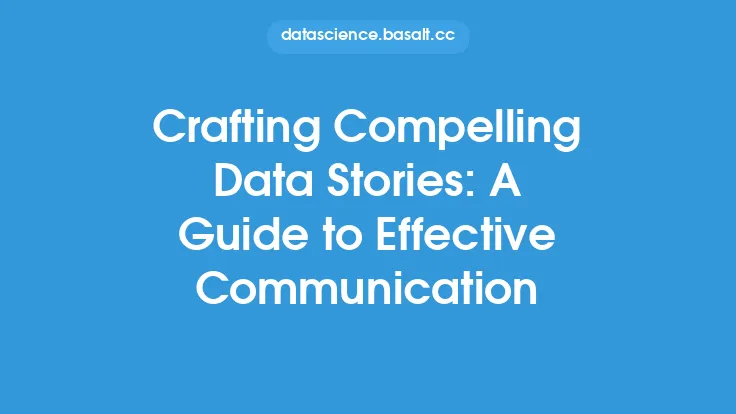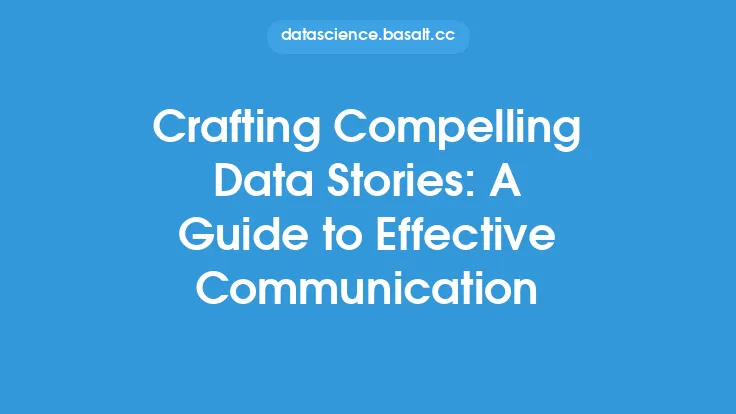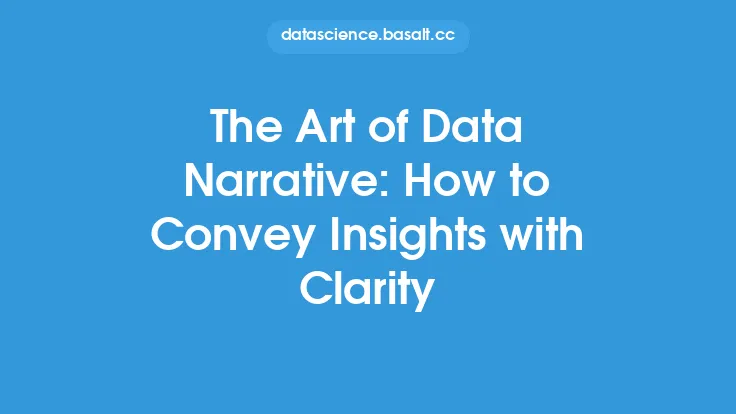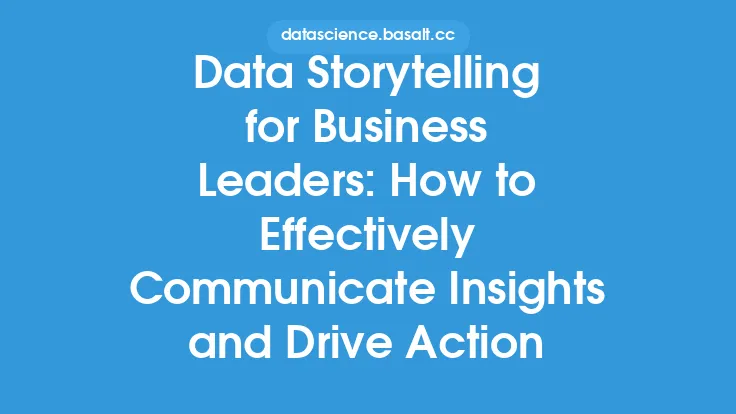When it comes to working with data, one of the most critical aspects is being able to effectively communicate the insights and findings to stakeholders. This is a crucial step in the data analysis process, as it allows businesses to make informed decisions and drive action based on the data. However, communicating complex data insights can be a challenging task, especially for those who are not familiar with data analysis or technical terminology. In this article, we will explore the importance of effective communication of data insights to stakeholders and provide guidance on how to achieve this.
Understanding the Audience
To effectively communicate data insights to stakeholders, it is essential to understand who the audience is and what their needs and expectations are. Different stakeholders may have varying levels of technical expertise and familiarity with data analysis, so it is crucial to tailor the communication approach to the specific audience. For example, communicating data insights to business leaders may require a more high-level, strategic approach, while communicating to technical teams may require a more detailed, technical approach. Understanding the audience's needs and expectations will help to ensure that the communication is effective and that the insights are actionable.
Choosing the Right Visualization Tools
The choice of visualization tools is critical in effectively communicating data insights to stakeholders. There are many different types of visualization tools available, including tables, charts, graphs, and maps, each with its own strengths and weaknesses. The choice of tool will depend on the type of data being analyzed, the insights being communicated, and the audience. For example, a simple bar chart may be effective for communicating categorical data, while a more complex visualization such as a heatmap or scatter plot may be needed to communicate more complex relationships. Some popular data visualization tools include Tableau, Power BI, and D3.js, which offer a range of visualization options and customization capabilities.
Best Practices for Communicating Data Insights
There are several best practices to keep in mind when communicating data insights to stakeholders. First, it is essential to keep the communication clear and concise, avoiding technical jargon and focusing on the key insights and findings. Second, the communication should be visually engaging, using visualization tools to help illustrate the insights and make them more accessible to the audience. Third, the communication should be interactive, allowing stakeholders to explore the data and ask questions. Finally, the communication should be actionable, providing stakeholders with clear recommendations and next steps based on the insights. By following these best practices, businesses can ensure that their data insights are effectively communicated to stakeholders and that they drive action and decision-making.
The Role of Storytelling in Data Communication
Storytelling is a powerful tool in communicating data insights to stakeholders. By using narrative techniques to convey the insights and findings, businesses can make the data more engaging and accessible to the audience. Storytelling can help to provide context and background information, explain complex concepts and relationships, and highlight key findings and recommendations. Additionally, storytelling can help to create an emotional connection with the audience, making the data more memorable and impactful. To use storytelling effectively in data communication, businesses should focus on creating a clear and concise narrative, using visualization tools to illustrate key points, and emphasizing the key insights and findings.
Technical Considerations
From a technical perspective, there are several considerations to keep in mind when communicating data insights to stakeholders. First, the data should be accurate and reliable, with clear documentation and metadata to support the insights and findings. Second, the visualization tools should be scalable and flexible, able to handle large datasets and complex relationships. Third, the communication should be secure, with appropriate access controls and encryption to protect sensitive data. Finally, the communication should be accessible, with clear and consistent formatting and design to support stakeholders with disabilities. By considering these technical factors, businesses can ensure that their data insights are effectively communicated to stakeholders and that they meet the necessary standards for accuracy, reliability, and security.
Common Challenges and Pitfalls
There are several common challenges and pitfalls to watch out for when communicating data insights to stakeholders. One common challenge is the use of technical jargon or complex terminology, which can confuse or intimidate the audience. Another challenge is the lack of clear and concise communication, which can lead to misunderstandings or misinterpretations of the data. Additionally, the use of inadequate or ineffective visualization tools can make it difficult for stakeholders to understand the insights and findings. To avoid these challenges and pitfalls, businesses should focus on using clear and simple language, providing adequate context and background information, and using visualization tools that are engaging and accessible to the audience.
Conclusion and Future Directions
In conclusion, effectively communicating data insights to stakeholders is a critical aspect of the data analysis process. By understanding the audience, choosing the right visualization tools, following best practices, using storytelling techniques, and considering technical factors, businesses can ensure that their data insights are effectively communicated and drive action and decision-making. As the field of data visualization continues to evolve, we can expect to see new and innovative approaches to communicating data insights, including the use of artificial intelligence, machine learning, and virtual reality. By staying up-to-date with the latest trends and technologies, businesses can stay ahead of the curve and ensure that their data insights are communicated in the most effective and impactful way possible.





